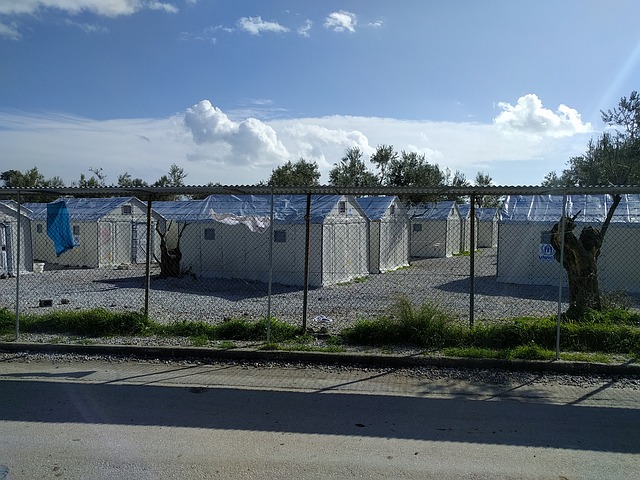
Can market mechanisms solve the refugee crisis? In one word: No. It will take more than one policy to solve the escalating humanitarian and political crisis currently facing Europe. However, market mechanisms offer a real opportunity to help and to be a part of the solution.
Whilst looking for a resolution and a method for distributing responsibilities for providing asylum, the New European Agenda on Migration proposed the distribution of refugees across member states through mandatory quotas. But my work with my colleague Hillel Rapoport has led me to believe that these quotas are just the first step in the process; for quotas to be truly successful, I propose that they must be complemented by two market mechanisms, forming a three-step process. I have written about this in more depth in my IZA World of Labor article.
Step two is a matching scheme: In the same way that students are matched to schools, refugees can be matched to countries. In particular, no refugee should be forced to go to an undesired destination, which would be both inhumane and expensive. Matching does not mean that they could choose their most preferred option but it would be efficient to allow them to fill a list of preferred countries and, more importantly, to specify destinations they would not be willing to relocate to. Once a matching algorithm is in effect, some refugees could be sent to their first option, say Germany or Sweden, but they could go down their list of preferences, once their first option’s quota is filled, to their second, third, or fourth options. If all receiving countries are full—and only vetoed destinations are left—these refugees would then remain in the refugee camp. The advantage of the matching scheme, which can be extended to take into consideration the preferences of receiving countries, is that it would make relocations voluntary and would be likely to contribute to better integration in the destination countries.
The third step is a compensation mechanism. Quotas do not need to be fixed or nations forced to accept more refugees than they believe they can support. Countries perceiving the quotas—based on GDP levels, total population, unemployment rates, and past flows of refugees hosted—as being too costly for them should be allowed to opt out in exchange for financial compensation. In other words, countries should be given the opportunity to contribute to the provision of refugee protection in one of two ways: physically (actually receiving the assigned refugees) or financially (paying other member states to receive their assigned refugees). Hence, countries perceiving the reception of refugees as less costly for them would be compensated by those that perceive it as more costly. This compensation scheme would act as a market for refugee-admission quotas, although it could also work as an auction or through a tax and subsidy scheme. Let us be clear: What is bought and sold are not refugees, but obligations to provide protection to refugees. It would be a system in which refugee-friendly countries would be paid by refugee-unfriendly ones to provide the physical assistance to refugees that they themselves are not willing to offer.
For the system to work effectively, the matching and compensation mechanisms would be integrated. If a country ends up with a quota but no refugees want to move there, the compensation does not go to this country but to the original location where the refugee has to remain—Turkey, for example. As a result, refugee-unfriendly countries are penalized if they try to accumulate quotas and get compensated while refugees refuse to go there.
What are the main differences between this proposal and the current system? This proposal puts the physical and the financial responsibilities of all countries at the same level; it is a truly common system. Currently the EU decides which part of a country’s contribution must be done physically through the quotas, and which part financially (contributions to the EU budget minus a subsidy of 6,000 euros per refugee resettled). From the perspective of an economist, 6,000 euros seems too small a subsidy since countries have been unwilling to relocate the requested refugees for this amount of compensation. What I propose amounts to an adjustable subsidy, based on the willingness of the EU member states to provide physical protection and relocation. If no country wants to provide this physical protection, the subsidy will keep going up until a country does. Furthermore, the matching part of the scheme makes sure that refugee rights are respected in the sense that they are not forced to move to undesired and unfriendly destinations. Additionally, their welfare and their ability to contribute to their host societies can be improved if their preferences are taken into account, as was decided in the European Parliament in September 2015.
Distributing quotas across countries is just one way of sharing responsibilities, physical ones. There is another way of contributing to the public good of providing refugee protection: money. The choice between taking refugees and giving money can be made by individual member states, as long as there is a matching mechanism in place to ensure that refugee rights are respected along the way.
© Jesús Fernández-Huertas Moraga
Related articles:
Can market mechanisms solve the refugee crisis? by Jesús Fernández-Huertas Moraga
Setting policy on asylum: Has the EU got it right? by Tim Hatton
Please note:
We recognize that IZA World of Labor articles may prompt discussion and possibly controversy. Opinion pieces, such as the one above, capture ideas and debates concisely, and anchor them with real-world examples. Opinions stated here do not necessarily reflect those of the IZA.